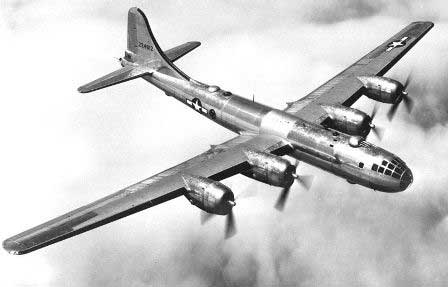
WHEN THE CALL CAME TO JUMP
By Bob Jamison
While flying the friendly skies over the Pan Handle of Texas at twenty nine thousand feet, lst Lieutenant Glen R. Prater, long time resident of Dayton, heard that freighting “bail out bell” ring in his ears in the B-29 Super Fortress. Tremendous vibrations in that great airplane literally shook the entire crew into reality that something must be dreadfully wrong.
It was during the latter part of World War II on July l2, l945 when the training mission flight from Alamogordo AFB in New Mexico in route to Dayton, Ohio and return, that the plane’s captain rang the bail out bell. Apparently, the air speed indicator registered an alarm of air speed close to a stall. This was a dangerous situation. The pilot added power to the four powerful engines of the B-29 and put the nose downward.
The bail-out bell rang loudly and the other six man crew grabbed their chest pack parachutes to follow the order. Though none had any parachute training other than a brief few minutes in basic training, they were destined to do the perfect free fall from high altitude. There was little time for discussion. They must follow the orders immediately.
The blistering airspeed of the airplane was blinding. The fate of all six of the airmen ordered to bail out was not known immediately. They were later picked up near Lipscomb, Texas in the corner of the Texas Pan Handle including one killed.
Prater remembered looking between his boots and seeing the town of Lipscomb below. Five of the crew floated toward the green earth. The one killed had a mishap by likely accidentally jerking his rip cord when he left the door. It was entangled in the tail assembly causing his death. In the meantime, the plane’s problem was discovered and it landed safely at a nearby air port.
Prater’s parachute carried him into a stubble field near a farm road. A farmer drove up in a pickup to look him over. The air force officer in uniform gathered up an arm load of silk parachute and ask for help. Shortly, the sheriff drove up pulling a trailer with a horse. “Boy, you know how to ride a horse?” he asks. Glen got on that horse as he knew generally where the others landed and rescued several of them. They were taken to Lipscomb and placed into an ambulance as some were injured.
If humor could possibly be mustered from such a tragedy with the loss of a fellow airman, it would indeed be difficult to imagine. However, there was an old joke in the air force that if you were forced to bail out and failed to retrieve your rip-cord that you would be obligated to pay for it. Glen stuffed his in his side pocket just in case as he is born conservative.
Glen Prater was a bombardier who was to master the Norden Bomb Sight. Afterward he was selected out of many to an exclusive top secret school to learn of the newly developed “radar bomb sight”. Upon finishing this school he was then selected to remain as an instructor of the new bombing apparatus.
Glen Prater came to Dayton as a Highway Patrolman and remained as such for eight years. Then he received the appointment as post master in Dayton. When he retired he ran for Justice of the Peace in Precinct Four where he remained a popular judge for several terms and efficient officer of the court. Several years along this period he was recognized as an outstanding Boy Scout Master of Troop 64 in Dayton. He was decorated with the coveted Silver Beaver Award for excellence in scouting. He likely produced more Eagle Scouts than any before or since with his leadership quality.
Our nation, state, county, precinct and town are fortunate for his service. He has been recognized as the Citizen of the Year award and special recognition for his tireless support of his church. A quiet and unassuming man, he is truly a man among men.